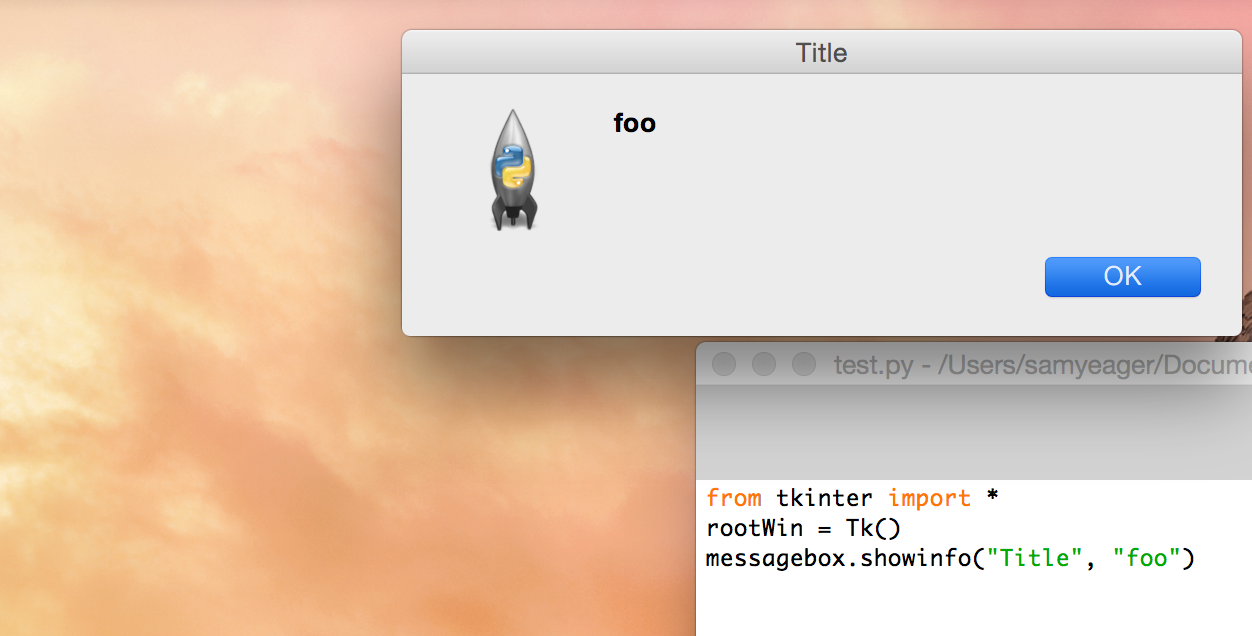

- #APPDELETE MAKE TAB BAR VC ROOT WINDOW SWIFT 4 CODE#
- #APPDELETE MAKE TAB BAR VC ROOT WINDOW SWIFT 4 WINDOWS#
A window is effectively pinned to the physical display (window bounds are screen bounds and do not change), but a view can be given a transform so that its top moves to the current top of the display. The user can rotate the device, and you might like the interface to rotate in response, to compensate. The chief concepts involved in the use of view controllers are as follows: The view has no explicit pointer to the view controller that manages it, but a view controller is a UIResponder and is in the responder chain just above its view ( Chapter 11), so it is the view’s nextResponder. (You are less likely to subclass other built-in UIViewController subclasses such as UINavigationController or UITabBarController - except for very specific and limited purposes, such as to customize rotation settings.)Ī view controller manages a single view (which can, of course, have subviews) its view property points to the view it manages.

You might write your own UIViewController subclass you might use a built-in UIViewController subclass such as UINavigationController or UITabBarController or you might subclass a built-in UIViewController subclass such as UITableViewController ( Chapter 21). You are very unlikely to use a plain vanilla UIViewController object. The UIViewController class is designed to be subclassed. Actually, a view controller is most likely to be an instance of a UIViewController subclass. Management of this task resides in a view controller, an instance of UIViewController. Animation is often used to emphasize and clarify the replacement of one view by another. Thus, entire regions of interface material - often the entire contents of the screen - must come and go in an agile fashion that is understandable to the user. The iOS solution to this is to swap out interface and replace it with other interface, as needed. With iOS, everything needs to fit on a single display consisting of a single window, which in the case of the iPhone is almost forbiddingly tiny.
#APPDELETE MAKE TAB BAR VC ROOT WINDOW SWIFT 4 WINDOWS#
On the desktop, an application’s windows can be big, and there can be more than one of them, so there’s room for lots of interface. Let rootController = UIStoryboard(name: "Main", bundle: Bundle.main).instantiateViewController(withIdentifier: "WelcomeNavigation")ĪppDel.window?.An iOS app’s interface is dynamic, and with good reason. In file MyTabThreeViewController.m - (IBAction)actionLogout:(id)sender In SignUpViewController.m file - (IBAction)actionSignup:(id)senderĪppDelegate *appDelegateTemp = delegate] Ī = ] instantiateInitialViewController] UIViewController* rootController = ] navigation = initWithRootViewController:rootController] In your appDelegate.m inside your didFinishLaunchingWithOptions //authenticatedUser: check from NSUserDefaults User credential if its present then set your navigation flow accordingly I've considered making the login screen the root view controller, or creating a navigation controller in the AppDelegate to handle everything… I'm just not sure what the best method is at this point. I need a way to clear this easily on logout. If they login to a new account, the old account data is still displayed until they refresh. When they logout, all the data is still inside all the view controllers.
#APPDELETE MAKE TAB BAR VC ROOT WINDOW SWIFT 4 CODE#
I've tried moving the code to viewWillAppear but the segue will not work that early.

The first time they launch the app, the Tab Bar Controller shows briefly before the segue is performed.This all works fine, but I'm wondering: should this logic be in the AppDelegate? I also have two issues: Upon logout, I clear the credentials from the Keychain, run and perform the segue to show the login view controller again. I also setup a notification for when the logout action needs to be performed: addObserver:self object:nil] Inside my Tab Bar Controller class, I check whether they are logged in inside the viewDidAppear method, and a perform the segue: What I've done so far is set the root view controller to the Tab Bar Controller, and created a custom segue to my Login view controller. When they manually click a logout button, show the login screen, and clear all the data from the view controllers.Any time they launch the app after that, check if they are logged in, and skip straight to the first tab of the root Tab Bar Controller.When they login, go to the first tab of the Tab Bar Controller. Show a login screen the first time the app is launched.I need to know the BEST way to set all this up. I'm creating the login/logout process, and it's mostly working fine, but I've got a few issues. The root view controller is a Tab Bar Controller. I'm building an iOS app using a Storyboard.


 0 kommentar(er)
0 kommentar(er)
